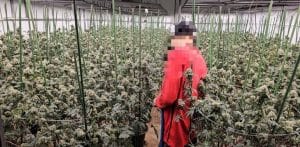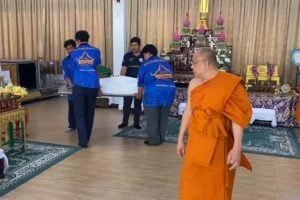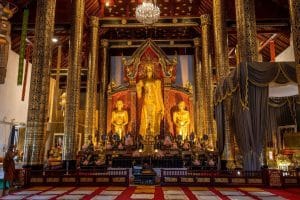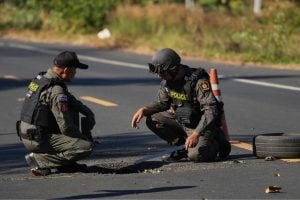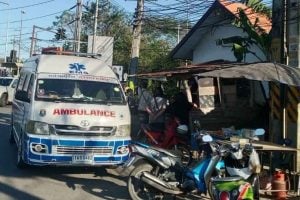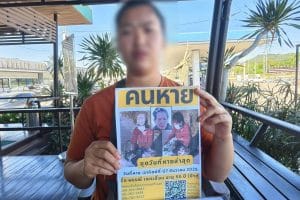Migrant worker exodus hits agriculture, construction sectors
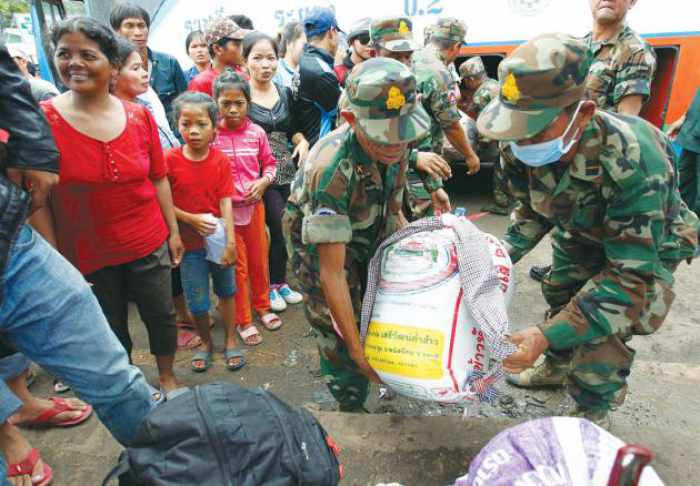
– Thailand news selected by Gazette editors for Phuket’s international community
PHUKET: Of the more than 100,000 Cambodian workers who fled Thailand, 60-70 per cent were in the construction and agricultural sector in the East, permanent secretary for Labour Jeerasak Sukhonthachart said yesterday.
Over the past week, more than 100,000 Cambodian workers in Thailand have returned home following rumours that the National Council for Peace and Order (NCPO) was planning to crack down on them.
The Labour Ministry has said it would launch a project to systematically move documented workers to the areas abandoned by the departed Cambodians.
However, the Thai-Cambodian Border Trade and Tourism Association of Chanthaburi province has predicted the Cambodian workers would return to Thailand within a few weeks because Thai wages are at least three times higher than those in Cambodia.
Speaking to 1,500 employers and migrant workers in Chon Buri’s Sri Racha district yesterday, Jeerasak said Rayong had seen 30,000 documented Cambodian workers and possibly another 30,000 undocumented ones departing Thailand.
Crackdown aimed at traffickers
He said the NCPO’s crackdown was aimed not at individual workers but at human trafficking to punish procuring persons, the employers and benefit-reaping officials.
Under a project to tackle the suddden labour shortage, employers could inform their provincial employment office about the number of migrant workers needed, their sex, work details, wages and welfare.
The office could then contact other employment offices with plentiful migrant workers to invite them to work in the affected areas, he added.
Business operators also urged the waiving of the Bt1,000 fee per worker charged in cases of migrant worker relocation.
Chon Buri employment official Pichit Nilthongkham said the province’s 90,000 documented workers included some 40,000 Cambodians. The worker exodus – although mostly by undocumented Cambodians – affected all sectors especially agriculture and fisheries, followed by construction and tourism and hospitality. Pichit said Thai authorities tried to have employers keep records of migrant workers for easier checking. At the same time, other business operators could be asked to “lend” their workers to the hard-hit agricultural sector.
The chairman of Sri Racha district’s club of migrant workers, Min Lin Sao, said 200 out of the club’s 300 members had departed Thailand. He said he would relay the official message to club members that the Army and the police would not mistreat the workers.
He said many understood this and had continued to work as usual.
Rayong Chamber of Commerce chair Anuchida Chinsiraprapha said the Cambodian workers’ exodus had affected businesses on the tourist island of Koh Samet.
SMEs suffering
Despite attempts by Thai authorities to allay foreign workers’ concerns, most remained worried and their departures had impacted small- and medium-sized enterprises, she said. All 500 Cambodian workers on Koh Samet had left local shops, restaurants and hotels and consequently there was little labour on duty in the service sector there.
The shortage was also severe in the agricultural sector as there were no workers to harvest fruit or tap latex, she said, warning the problem would expand to fisheries and the para wood (natural rubber tree) industries.
Fruit orchard owners in Rayong’s Muang district, meanwhile, claimed they had to hire Thai workers at Bt500 a day – compared to the Bt300 a day paid to Cambodians. Orchard-owner Somkuan Prangsri said, “Thai workers also aren’t as skilled in fruit-picking as the migrant workers we used to hire, so we get low-quality produce bringing down the price of fruit.”
However, some Cambodian workers are reportedly returning to Pong Nam Ron and Soi Dao districts in Chanthaburi province, as they need wages to support their families.
Some Cambodians told their Thai employers they would be back after preparing their documents to seek legal immigration into Thailand.
Former energy minister Pichai Naripthaphan commented that the re-organising of Thailand’s 5-6 million migrant workers, documented or otherwise, should be carefully implemented as an exodus could severely affect the country’s economy already hampered by the unrest.
He urged the authority to take into consideration the upcoming Asean Economic Community that promoted a free flow of labour.
Meanwhile, Chulalongkorn University academic Panitan Wattanayagorn backed the plan to have some 2 million illegal workers registered into a proper system, which would also give them basic rights |protection and boost Thailand’s image.
Many provinces – such as Nakhon Ratchasima, Tak and Songkhla – have seen Thai authorities adopting public relations to help employers and migrant workers understand the situation and dismiss talk of a violent crackdown on Cambodian workers.
Cambodian Interior Minister Sar Kheng placed the blame for the crisis squarely at Bangkok’s door, AFP reported yesterday.
“After the military coup in Thailand, the Thai military leaders sent illegal Cambodian migrant workers in a rush without informing and discussing with Cambodia,” he said in Phnom Penh, adding that eight people had been killed in traffic accidents linked to the exodus.
“I think that the current leaders of the Thai junta must be held accountable for what has happened.”
Sar Kheng, who is also deputy prime minister, said Cambodian migrants had helped boost the Thai economy, which is the second-largest in Southeast Asia and draws large numbers of migrants from its neighbours.
“So when they deported them, there will be a problem. According to my informal information, [Thai] employers have started to protest against the issue,” he said.
— Phuket Gazette Editors
Latest Thailand News
Follow The Thaiger on Google News:





